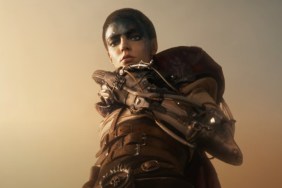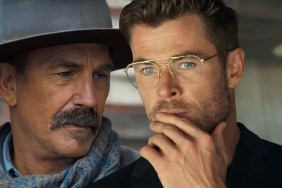
Two years after Mad Max was released in its native Australia and only a year after it finally hit U.S. theaters, director George Miller brought his title character back to the big screen in Mad Max 2: The Road Warrior and created what many consider to be one of the best (if not the best) post apocalyptic movies of all-time, not to mention one of the best action films of all-time, and deservedly so. This is a film experience unlike many we’ve ever seen and, thanks to CG run amok, unlike many we’ll ever see again.
It’s hard to comment on The Road Warrior without recognizing its place in the hearts of many. It’s almost impossible to not look at it through the lens of its place in the history of cinema. Tell someone seeing it for the first time today that it’s believed to be one of the best movies ever and you’re setting expectations today’s younger audiences might not understand, because as enthralling as it can be, this is the kind of post apocalyptic movie filmmakers don’t make any longer. Through the use of unimaginable practical effects and stunt work, the absence of CGI and cinematography more interested in placing the viewer in the heart of the action, than desaturating the image and trying to look cool, The Road Warrior, instead, is cool.
Set an indeterminate amount of time following the events in Mad Max, it’s clear the world has reached a point of complete chaos and upheaval. Oil and water are in low supply and high demand, and we’re thrust into the action immediately as Max (Mel Gibson), an ex-police officer in the now defunct Main Force Patrol, is being chased by a group of bikers led by Wez (Vernon Wells), a crazed psychopath we’ll soon become more than familiar with. The scene eventually ends in Max’s triumph, killing two of his pursuers, injuring Wez and ultimately able to collect the fuel from their wrecked vehicles.
Next, coincidence plays a strong role as Max just so happens on a gyro-plane where he ultimately finds himself staring down the barrel of a gun held by the plane’s captain, an unnamed gangly gentleman played by wide-eyed and toothy character actor Bruce Spence. Once Max flips the tables the two reach a deal and Max is taken to a cliff side overlooking a heavily guarded oil refinery wherein its inhabitants are constantly under siege by the hulking Lord Humungus (Kjell Nilsson) and his accompanying gang of marauders, one of which is the aforementioned Wez, threatening to attack. When one of the encampments missions is thwarted by Humungus and his gang, Max delivers the only surviving member to the encampment in hopes of trading for gas and water, but soon finds himself fighting for the settlers.
If Mad Max was a film focused on Max’s loss of humanity, The Road Warrior is where he finds it once again. Critical to that discovery is the young child known as the “Feral Kid” (Emil Minty), who grunts his way through the film and eventually finds himself clinging to Max. The young kid’s path ultimately finds him atop the hood of Max’s truck as the film comes to an explosive finale wherein Miller cranks the sound down to a whisper, leaving only the sound of a heart beat to accompany what may be the most memorable scene in the franchise.
Where Miller succeeds both with Mad Max and The Road Warrior is obviously in his competence with the film’s action sequences, that’s a no-brainer, but more importantly in his ability to give his villains a certain level of charisma and character. Wells plays Wez as a psychopath with a red mohawk and his eyes bugging out of his head. But there’s more to Wez than just a psychotic menace and it’s when his leather-clad boyfriend takes a boomerang to the head that his snarling begins to have more meaning.
Also consider Lord Humungus, a ridiculous name if there ever was one and he’s even more ridiculous as he sports a hockey mask and leather S&M gear that leaves little to the imagination. But this is a guy with character, and Miller is a master at the art of showing, but not showing. Violence in his Mad Max films is not necessarily gory (though it should be noted The Road Warrior was edited down from an earlier, bloodier cut, and a complete uncut version has yet to be released) or gruesome. Yet, you feel the violence, you believe you’ve seen the unseeable. We don’t know what’s beneath Humungus’ mask, but the pulsing of large veins on the top of his head and the few wisps of hair that remain certainly suggest a less-than-appealing visage.
The Road Warrior is the film Mad Max was leading to when it began its first frame on Anarchie Road. However, I felt Mad Max excelled at both character and action while Road Warrior places a much larger emphasis on the action and no doubt does so at the highest of level. This isn’t a problem in the slightest, but merely a means of comparing the two and why I find Mad Max the slightest bit more compelling. Perhaps that’s because I find the exploration of a character’s downward spiral a little more intriguing than his rediscovery of his humanity, though both films are singularly unique, and have, and will continue to, inspire filmmakers for years to come, unlikely to ever be duplicated.









